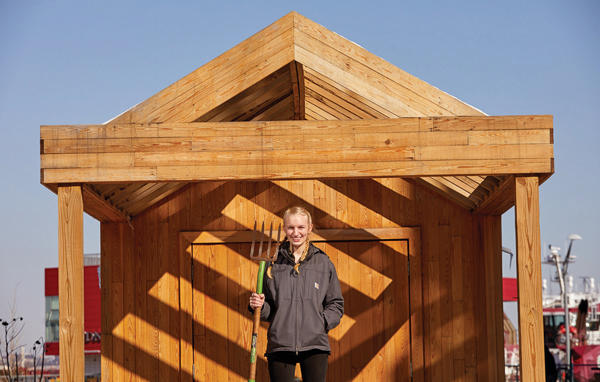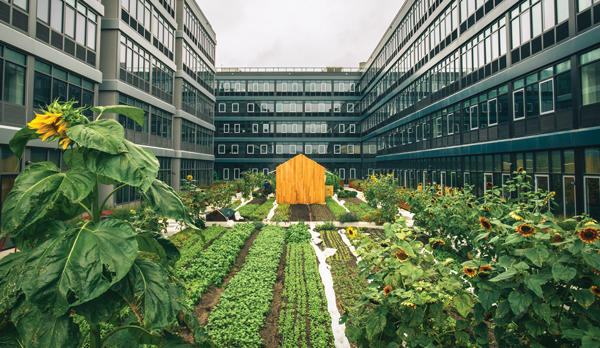Trending
Agro amenities
Staten Island Urby is offering urban farming at its 571-unit complex, luring in renters with tomatoes, hot peppers and fresh-grown herbs

Olivia Gamber is the “farmer-in-residence” at Staten Island Urby, a 571-unit, 80/20 mixed-income rental building by Ironstate Development.
“Most people, when I said, ‘I wanted to be a farmer,’ they laughed at me,” said Gamber, who lives in the complex and is one of 13 employees there. “If you’re in urban agriculture, there are huge barriers to entry.”
In her role at the project, Gamber manages a 5,000-square-foot urban farm called Rabbit’s Garden, where she grows vegetables, fruits and herbs available to Urby residents and those who live nearby.
Related: NYC’s Amenity Battleground
Ironstate — which is headed by brothers David and Michael Barry — bought the seven-acre waterfront property from the city for $11 million in 2011 and spent $275 million and five years developing it.
“We’re all very urban creatures now, but there’s this very deep piece [of us] that wants to connect with the earth and the land,” David Barry told The Real Deal.
Rental prices at Urby — which also has traditional amenities like a gym and a pool — range from $1,558 to $2,979.
While Ironstate has run with the concept — offering 29 five-by-five-foot garden plots to residents at its Harrison, New Jersey, development — so far farming has not caught on as New York’s latest hot amenity. But versions of the concept have popped up.

Urby
GID Development’s luxury residential development Waterline Square in Manhattan includes a “indoor gardening room” where residents can plant botanicals and arrange flowers.
“Developers tend to be risk-averse,” Barry said. “If profit isn’t clear, they won’t experiment.”
He said Ironstate was able to make the investment at its Staten Island site because of the large horizontal plot. At more dense, vertical Manhattan projects, the same idea wouldn’t be physically possible, he said.
But sustainable building is becoming increasingly important to the next generation of renters and buyers. “When you’re marketing to millennials, you can’t ignore that,” Barry said.
In addition to tending to the crops, Gamber wears several other hats — from filing the farm’s taxes to handling social media and marketing for the farm. She also teaches urban farming to residents and people in the surrounding neighborhood.
Donna Olshan of Olshan Realty said more luxury developers should explore environmentally friendly amenities and design.
“The next wave of development has to be considering completely going green,” Olshan said. “It has to try to go to being energy-efficient, like passive house construction.”
Correction: An earlier version of this story referred to Waterline Square as a luxury rental. It includes both condos and rentals.




